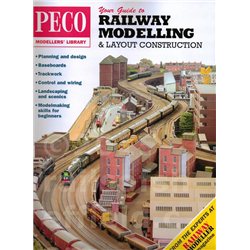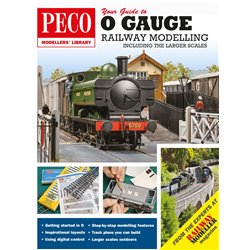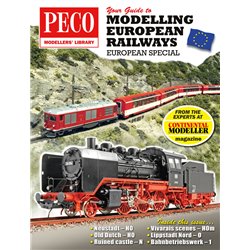Yes, it is possible to operate points at a distance without having to electrify them. Modellers may choose to adopt a...
No products
Product successfully added to your shopping cart
There are 0 items in your cart. There is 1 item in your cart.
Search Tips
Christmas and New Year
We are dispatching orders every weekday apart from Christmas Day, Boxing Day and New Year's Day.
If you order is time critical, select next day delivery at checkout.
The shop in Sandown is closed from 25th December, reopening on 30th December.
How do I choose a scale for my model railway?
Starting a model railway layout is an exciting endeavour, but one of the first decisions you'll need to make is which scale to build it in. The scale you choose will impact everything from the amount of space required and the level of detail, to the costs involved and availability of products. With several popular scales to consider, it's important to weigh up the pros and cons of each before making your choice.
In the UK, the most common model railway scales are:
OO Gauge (1:76.2 scale)
One of the most popular scales, OO allows for decent detail in a relatively compact space. A wide range of ready-to-run and kit models are available from many manufacturers. This is UK specific so models will look British.
N Gauge (1:148 scale)
N gauge is something of a "goldilocks" scale - allowing for quite intricate models while taking up less space than the larger gauges. A good option for those with limited room.
HO Scale (1:87.1 scale)
The most popular scale worldwide, HO offers the same detail as OO but products are not UK specific and have a "continental look".
O Gauge (1:48 scale)
Substantial and eye-catching, O gauge models have brilliant levels of detail but demand a serious amount of space. An excellent choice if you have a large area to dedicate to your layout.
When selecting your scale, consider:
- Space available: Larger scales need more room. Measure your allocated space carefully.
- Level of detail desired: The larger the scale, the more intricate the models can be.
- Budget: Smaller scales tend to be cheaper for track, rolling stock, accessories etc.
- Accessibility needs: Working with tiny N gauge models may be challenging for those with dexterity issues.
The availability of models for your preferred era and region should also be a factor. Research what is readily available in each scale before deciding.
Click here to receive the tips weekly in your mailbox. You can unsubscribe at any time.










